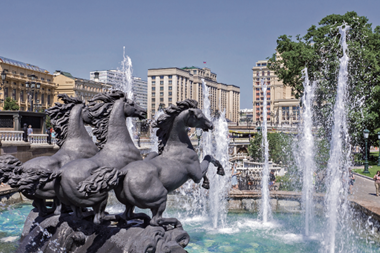Consolidation continues to drive down the number of Russian non-state pension funds (NPFs) providing compulsory pensions insurance.
On 6 September, Safmar announced the completion of its merger with the European, Regionfond and Education and Science pension funds, all part of the Safmar Financial Group (formerly the BIN Group).
Safmar itself is the renamed Raiffeisen NPF, which BIN acquired from the Austrian parent bank in October 2015.
The merger process started this year, receiving approval from the Federal Antimonopoly Service of the Russian Federation in May, and from the Bank of Russia (CBR), the pensions regulator, in August.
The newly merged entity has combined pensions savings of RUB177.3bn (€2.45bn), reserves of RUB8.3bn, a clientele of more than 2.265m in the mandatory second pillar and 75,800 covered in voluntary pensions.
The deal propels Safmar into fourth place in terms of pensions savings and fifth in terms of second-pillar clients.
The company told IPE it expected the reorganisation of Doverie, the group’s fifth NPF, to start next year.
Other financial groups are also in the process of consolidating their pension funds to achieve economies of scale.
In August, Gazfond announced that it was planning a merger with the three NPFs in the Alor Group – KIT Finance, Promagrofond and Naslediye (Heritage).
This transaction would make it the biggest in terms of savings and members, displacing the current market leader Sberbank.
Russia’s compulsory pensions system had, at the end of June, savings of RUB2,023bn and a membership of 29.93m, according to CBR data.
While savings grew by 17.6% since the start of the year, and members by 13.7%, the number of funds licensed to provide second-pillar coverage fell by 10 to 55, of which 46 were members of the Deposit Insurance Agency.
While some had their licences annulled by the CBR for various violations – six in June alone – consolidation is likely to be the main force for falling numbers.
Last month, Vladimir Chistyukhin, a deputy governor of the CBR, told Russian television he expected this process to bring the number of DIA-guaranteed funds to 30.
























No comments yet